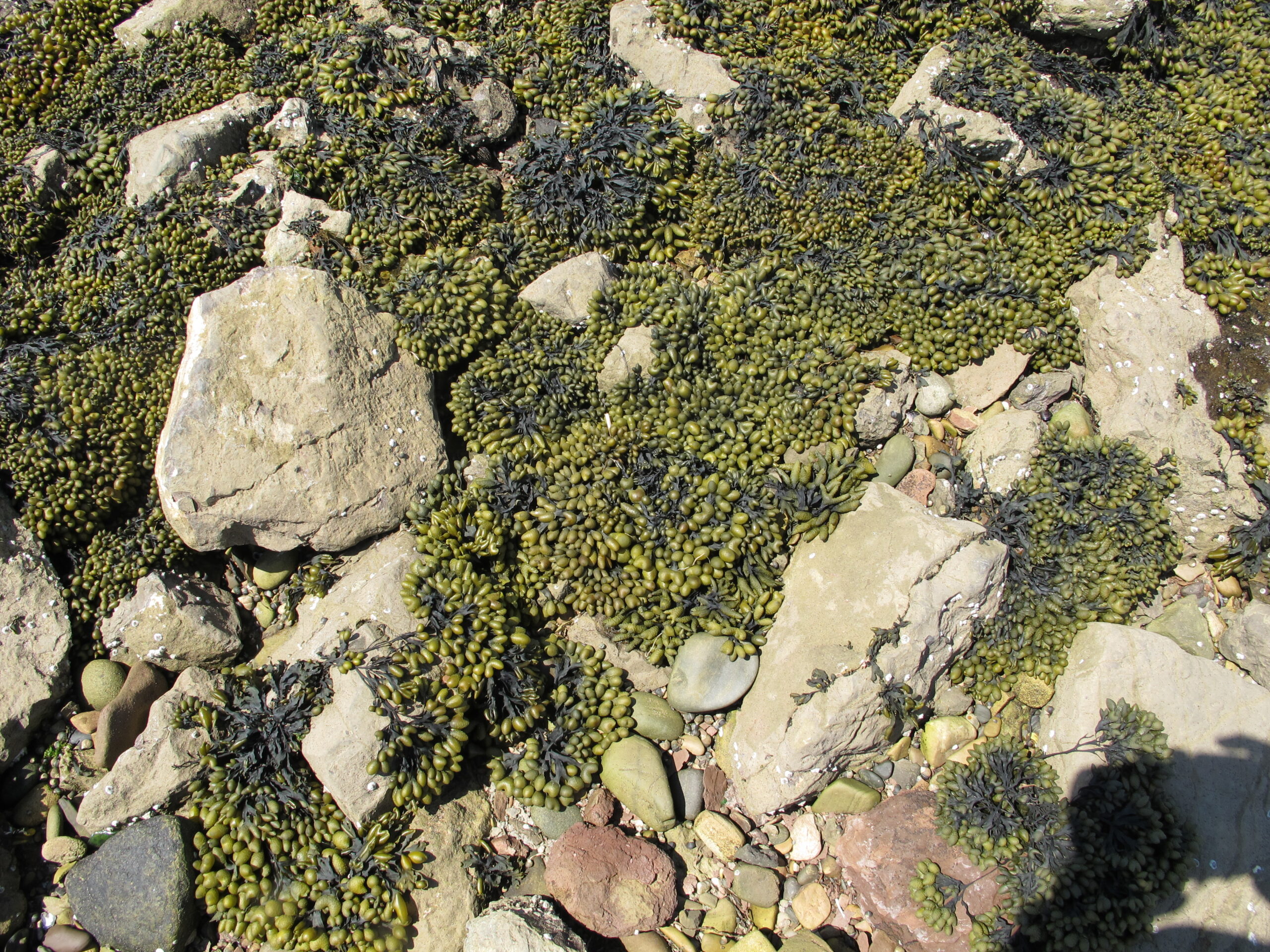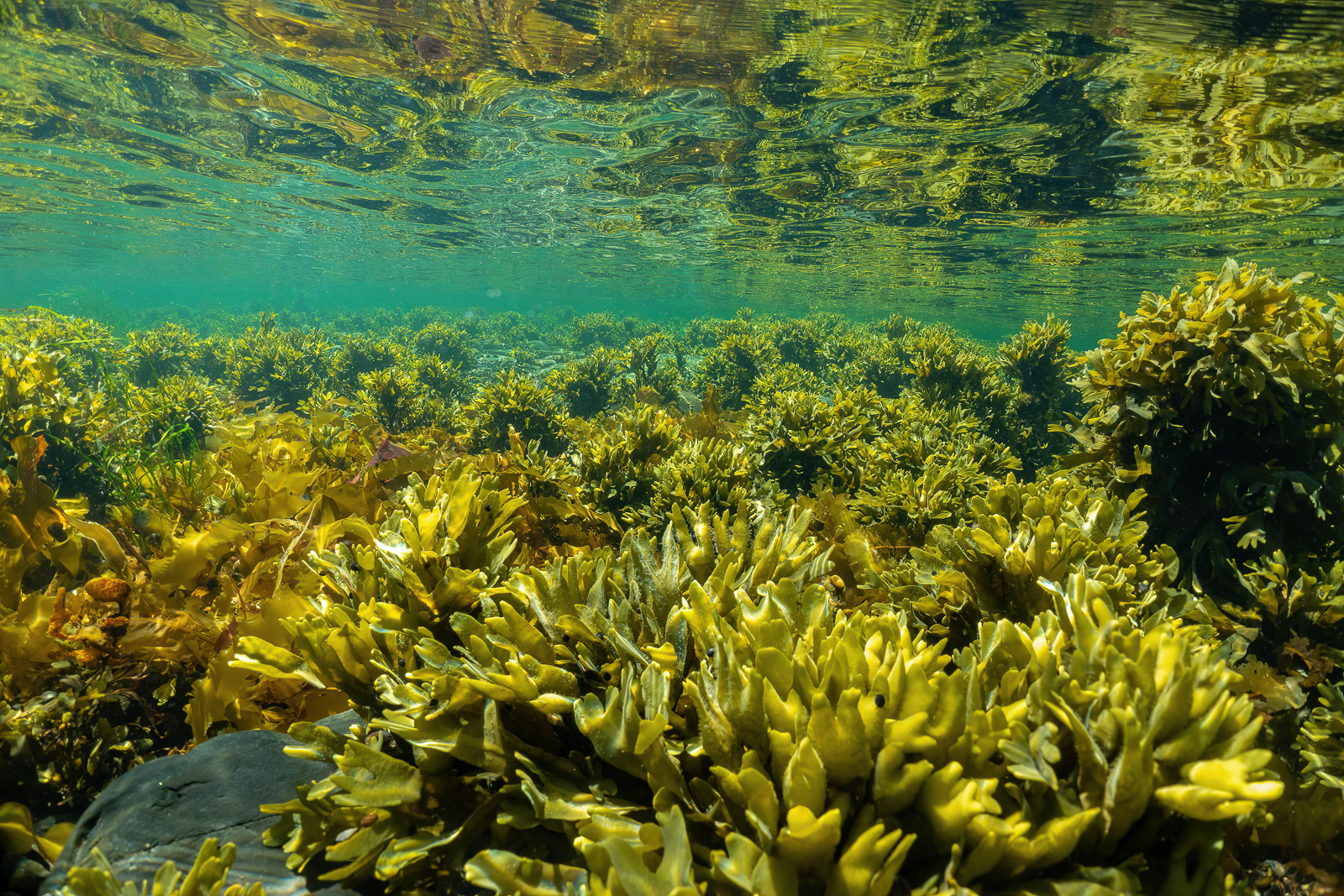
SIZE:
40 cm to 90 cm, depending on the species.
LIFE EXPECTANCY:
3 to 5 years (toothed rockweed), up to 15 years (bladder rockweed).
LIFE CYCLE:
Rockweeds are long-lived. They grow from the tips of their fronds. New branches are added to each tip of the existing ones. If the frond is lost, regeneration can also take place from the holdfast.
Depending on their species, the plants can bear one type of sex cell only, or both. In all cases, the receptacles at the end of the fronds release eggs and sperm in spring. After fertilization, the new individual settles to the bottom and begins to grow.

The reproductive cells are found in the receptacles at the end of the fronds.
Credit : Richard Larocque, photo taken in Mont-Louis.
The flat, leathery fronds of rockweed divide repeatedly into “Y” shapes. At the ends are growths, generally yellow-orange in color, called “receptacles”. Their shape varies according to the species, during the reproduction period: round, forked, long, etc.
Rockweeds range in color from dark yellow to green and brown. They cling to rocks with small holdfasts.
Coastal zone, up to 6 m in depth.
Rockweeds favor cold temperate waters.

Rockweeds are extremely hardy algae. They can survive severe dehydration, as well as exposure to fresh water.
Credit : Éric Tamigneaux, photo taken in Paspebiac, in 2012.
PREYS:
CO2
Solar energy
PREDATORS:
Herbivorous molluscs
Grazing fish
MACHINES:
Hand harvesting.
REGULATIONS:
Permit required. Cut the rockweeds with a sharp object, 15 cm above the holdfast. Every other frond is harvested.
Harvesting is done at low tide, rotating the zones. Ideally, an area should be harvested only once every three years.
Beached rockweeds can also be harvested for use as a field fertilizer.
Rockweed is a Smarter seafood listed species.
BENEFITS:
Rockweeds are rich in iodine and other minerals, including copper, zinc, calcium, magnesium, and iron. They are a good source of vitamins A, B, C and K. They are also a good source of fiber. They are rich in alginate, a natural gelling agent.
LET’S COOK:
Rockweeds have a strong marine taste, similar to that of oysters. They act as a natural flavor enhancer.
OUR CULINARY ADVICE:
- Add rockweed when steaming foods, to give them an umami flavor.
- Young fronds can be steamed, boiled, or fried.
- Use dried rockweed to season your dishes or to make infusions.
The waters of the St. Lawrence are well known for their high quality. However, as algae absorb the elements present in the water in order to grow, it is best to make sure that the harvesting site is clean before eating them fresh.
Qirquaq
In Nunavik, brown algae such as evanescent rockweed, called qirquaq in Inuktitut, are particularly popular. They are eaten fresh.






